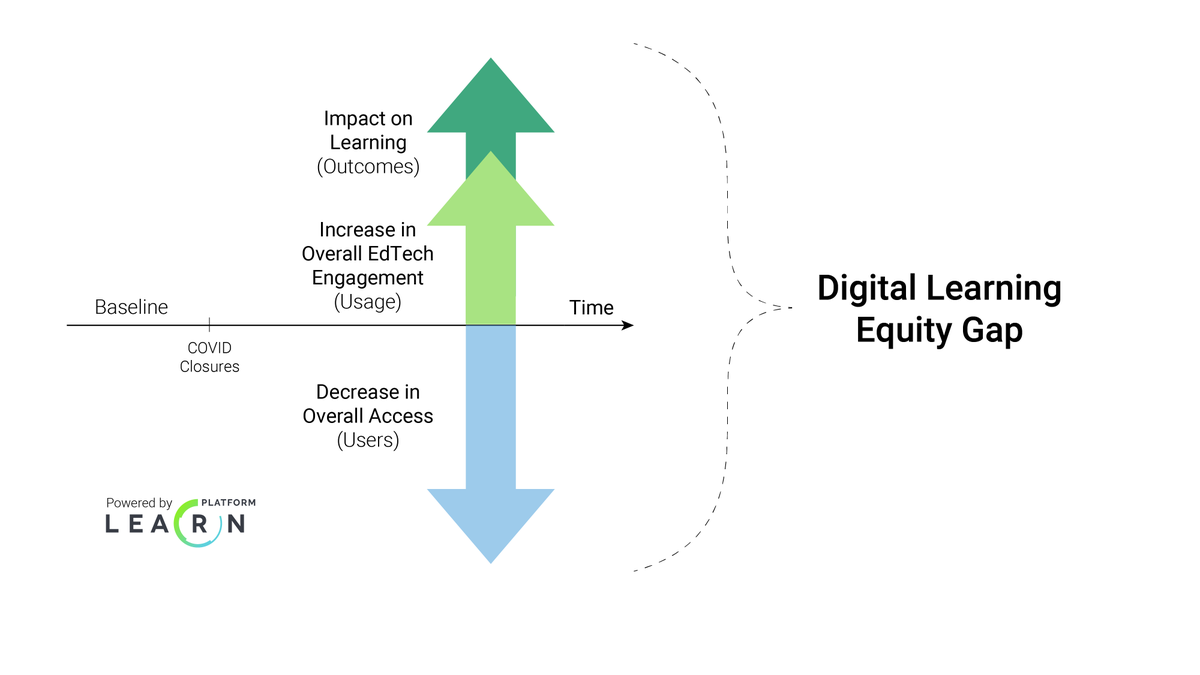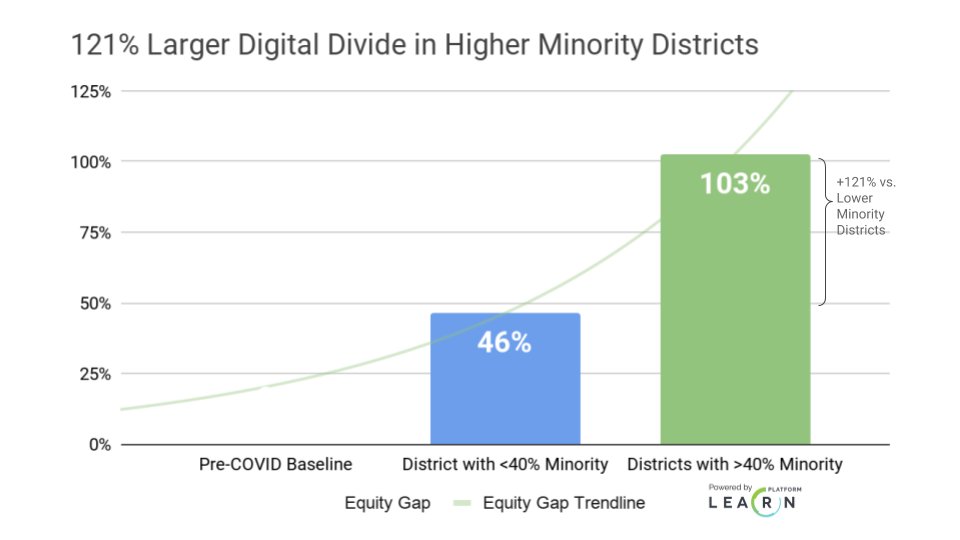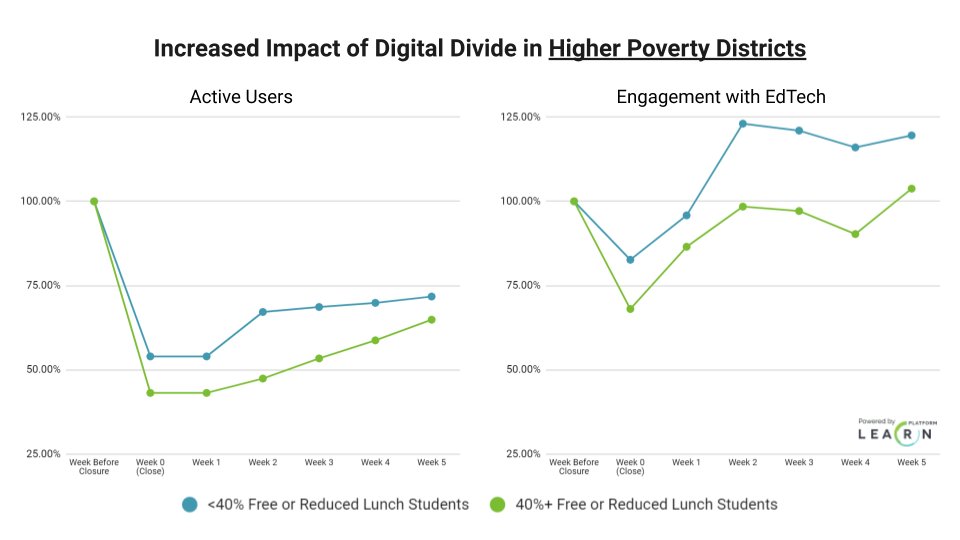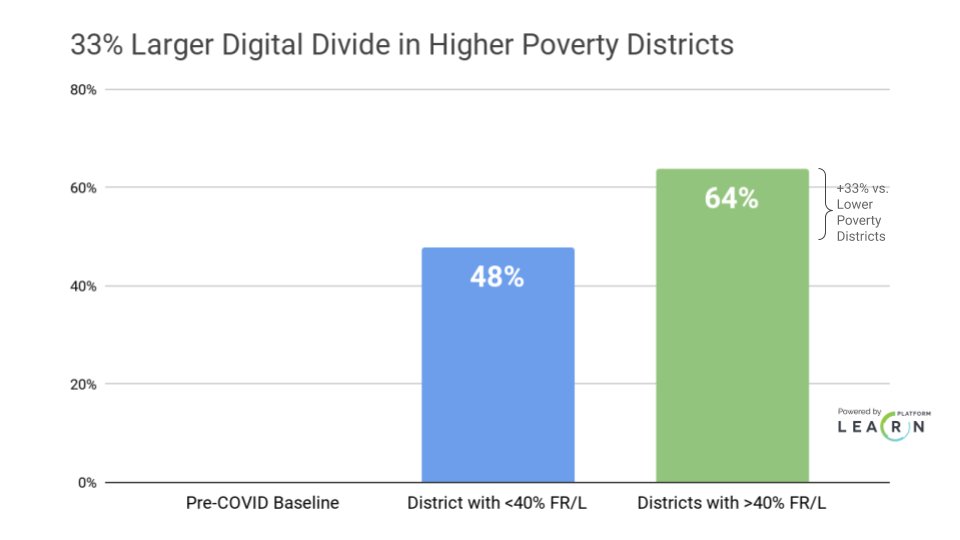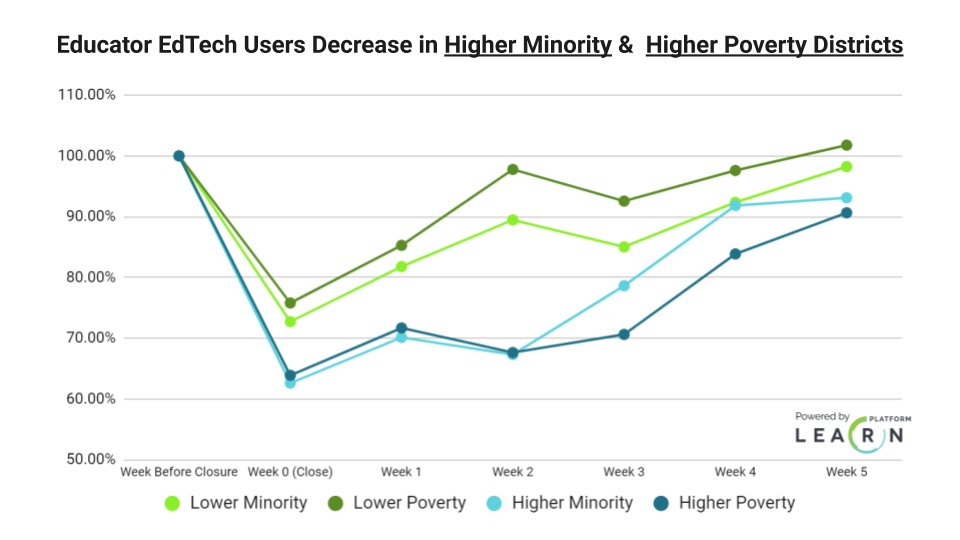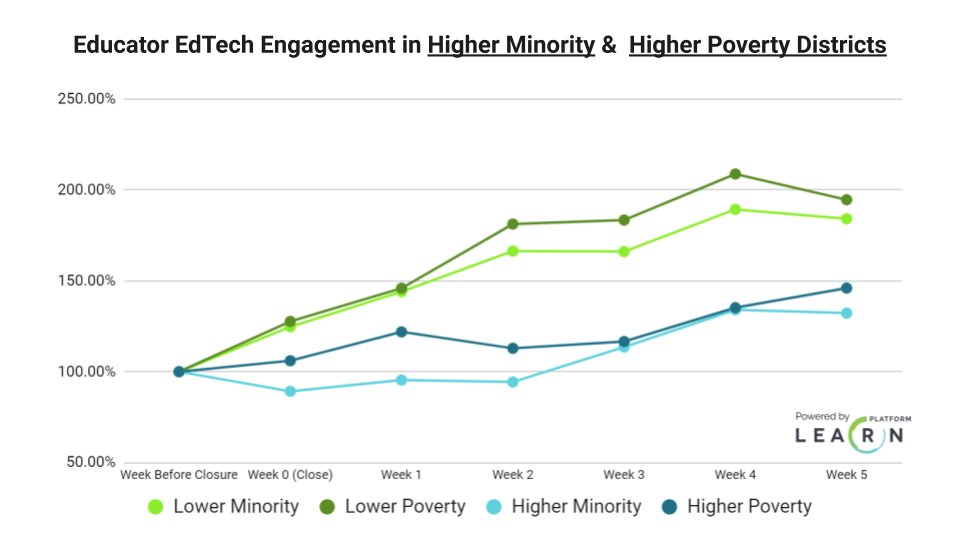Just released: a true measure of #DigitalLearning #EquityGap, w/ an analysis of what& #39;s happened in the months since school closures for #Covid19.
The Exponential Expansion of the #DigitalDivide is measurable, and harder on higher minority, lower wealth #k12 districts
(thread)
The Exponential Expansion of the #DigitalDivide is measurable, and harder on higher minority, lower wealth #k12 districts
(thread)
2/ The whole report, graphics and links are free, available here: https://learnplatform.com/blog/edtech-management/intro-digital-divide-series
This">https://learnplatform.com/blog/edte... thread highlights key findings -- which are stark, concerning, and, luckily, addressable by education leaders as they consider policies, practices & tools to reopen for fall.
This">https://learnplatform.com/blog/edte... thread highlights key findings -- which are stark, concerning, and, luckily, addressable by education leaders as they consider policies, practices & tools to reopen for fall.
3/ Traditionally, the #digitaldivide is measured simply by the % of students who lack of connectivity to an internet-accessible device. It& #39;s a binary measure (have/don& #39;t have), but educators understand that what matters is not only access but engagement that leads to learning.
4/ So, measuring engagement is important and needed. By understanding amount of engagement, districts and states can understand the true #digitallearningequitygap.
When % with access goes down, and engagement goes up for those with access, learning grows & the gap expands.
When % with access goes down, and engagement goes up for those with access, learning grows & the gap expands.
5/ Our team did a meta-analysis of hundreds of rapid cycle evaluations run by districts to quantify the resultant learning. Recognizing there are limitations & more precision is possible, one can nevertheless calculate the expected gap based on engagement data over time.
6/ #K12 districts & states serving 4m+ students use @LearnPlatformUS to organize, streamline and analyze their #edtech so it& #39;s safe, equitable & cost-effective teaching & technology. For more on how the #digitallearningequitygap is measured, see this blog https://learnplatform.com/blog/edtech-management/to-close-digital-divide-measure-engagement-effectiveness">https://learnplatform.com/blog/edte...
7/ The team dug into billions of data points across ~85 districts based on demographic & other criteria.
The analysis shows the #digitallearning #equitygaps are expanding exponentially post closure for all, but w/ outsized impact on higher minority and lower wealth districts.
The analysis shows the #digitallearning #equitygaps are expanding exponentially post closure for all, but w/ outsized impact on higher minority and lower wealth districts.
8/ For districts with >40% minority student populations (green), districts saw deeper access drops, slower engagement returns, but increased usage for those with access. (full details in this post: https://learnplatform.com/blog/edtech-management/increased-impacts-digital-divide-higher-minority-districts)">https://learnplatform.com/blog/edte...
9/ For those districts with 40%+ minority populations, this translates to 121% larger increase in the #digitallearning #equitygap compared to their peer districts (103% dleg vs 46%).
10/ For districts with 40%+ populations on free and reduced lunch, a common measure of wealth/poverty, the gap is also worse than their peers. Students in lower wealth communities have fewer students using less edtech during #remotelearning - and continuing over time (week 2-)
11/ In calculating the digital learning equity gap, this is the equivalent of a 33% larger gap compared to districts with less than 40% of students on F/RL.
(full details for this group in this post: https://learnplatform.com/blog/edtech-management/increased-impacts-digital-divide-higher-poverty-districts)">https://learnplatform.com/blog/edte...
(full details for this group in this post: https://learnplatform.com/blog/edtech-management/increased-impacts-digital-divide-higher-poverty-districts)">https://learnplatform.com/blog/edte...
12/ One thing people have asked is about #educator transition to #remotelearning overall and during this transition.
The data shows educators are universally doing their part, but the context has impact on resultant engagement. Users dropped in 1st weeks, and for longer.
The data shows educators are universally doing their part, but the context has impact on resultant engagement. Users dropped in 1st weeks, and for longer.
13/ While engagement went up a lot across the board for #educators, the trends reinforce that higher minority and lower wealth districts have other items to address and less access is contributing to lower engagement. Full blog on educator trends here: https://learnplatform.com/blog/edtech-management/teachers-doing-their-part-context-matters">https://learnplatform.com/blog/edte...
14/ Important to note that access is table-stakes for #remotelearning, the #homeworkgap, and addressing #learningloss. But addressing connectivity -- which many rightfully advocate for -- is not enough. And it is both doable and requisite to measure and improve engagement.
15/ If you& #39;re interested in downloadable graphics, etc, you can find them here: https://learnplatform.com/exponential-growth-of-the-digital-divide/assets
Again,">https://learnplatform.com/exponenti... whole analysis is here: https://learnplatform.com/blog/edtech-management/intro-digital-divide-series">https://learnplatform.com/blog/edte...
Again,">https://learnplatform.com/exponenti... whole analysis is here: https://learnplatform.com/blog/edtech-management/intro-digital-divide-series">https://learnplatform.com/blog/edte...
Big thx to school districts & states addressing a whole new paradigm, and to so many organizations working hard on #digitaldivide and #equitygaps, incl:
@CoSN @DigitalPromise @chiefsforchange @SETDA @iste @projunicorn @edforallorg @LearningAccel @HighlanderInst @CCSSO @JEXUVA
@CoSN @DigitalPromise @chiefsforchange @SETDA @iste @projunicorn @edforallorg @LearningAccel @HighlanderInst @CCSSO @JEXUVA

 Read on Twitter
Read on Twitter